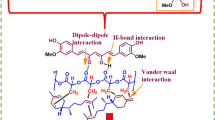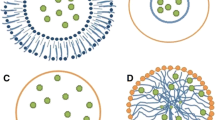Abstract
Packaging systems are facing a paradigm shift where challenges like recycling issues, non-biodegradable nature, and the migration of harmful chemical substances into food need to be solved. As a response, active packaging from sustainable materials has gained attention. Considering this, the extrusion process was employed to elaborate active mono-material films and elucidate the internal interactions between different content (0, 2.5, 5, and 7.5%) of inclusion complexes (IC) based on β-cyclodextrins (β-CD)/essential oils (orange or thyme) and sustainable materials such as biopolymers (PLA) and post-consumer recycled polymers (rHDPE). The thermal, morphological, mechanical, and antifungal properties of the films were evaluated. The addition of IC produced structural changes in the rHDPE films that promoted ordered matrix structures, as indicated by the changes in crystallinity. Furthermore, the PLA films containing β-CD-Orange or β-CD-Thyme showed smoother and more homogeneous surfaces, showing higher compatibility and interfacial adhesion between the ICs and the biopolymer, which resulted in better antifungal activity against Penicillium funiculosum hyphae growth. The results showed an alternative for the use of biopolymers and post-consumer recycled polymers to develop stiff (PLA) and less stiff (rHDPE) sustainable active packaging, which constitutes an interesting topic for further studies.






Similar content being viewed by others
Data Availability
The authors declare the transparency of data.
References
Alamri MS, Qasem AAA, Mohamed AA et al (2021) Food packaging’s materials: a food safety perspective. Saudi J Biol Sci 28:4490–4499
Kalpana S, Priyadarshini SR, Maria Leena M et al (2019) Intelligent packaging: Trends and applications in food systems. Trends Food Sci Technol 93:145–157. https://doi.org/10.1016/j.tifs.2019.09.008
Ataei S, Azari P, Hassan A et al (2020) Essential oils-loaded Electrospun Biopolymers: a future perspective for active food packaging. Adv Polym Technol 2020:1–21. https://doi.org/10.1155/2020/9040535
Yuvaraj D, Iyyappan J, Gnanasekaran R et al (2021) Advances in bio food packaging – an overview. Heliyon 7:e07998. https://doi.org/10.1016/j.heliyon.2021.e07998
Alizadeh Sani M, Tavassoli M, Salim SA et al (2022) Development of green halochromic smart and active packaging materials: TiO2 nanoparticle- and anthocyanin-loaded gelatin/κ-carrageenan films. Food Hydrocoll 124:107324. https://doi.org/10.1016/j.foodhyd.2021.107324
Salgado PR, Di Giorgio L, Musso YS, Mauri AN (2021) Recent developments in Smart Food Packaging focused on Biobased and Biodegradable Polymers. Front Sustain Food Syst 5:1–30. https://doi.org/10.3389/fsufs.2021.630393
Lau D (2021) Reimagining the future of plastics. https://ecos.csiro.au/reimagining-the-future-of-plastics/. Accessed 20 Mar 2023
Marinova D, Bogueva D (2022) Reducing Food Waste and Packaging. Food in a Planetary Emergency. Springer, Singapore, pp 57–72
Vallejos S, Trigo-López M, Arnaiz A et al (2022) From classical to advanced use of polymers in food and beverage applications. Polymers. https://doi.org/10.3390/polym14224954
Cecon VS, Da Silva PF, Curtzwiler GW, Vorst KL (2021) The challenges in recycling post-consumer polyolefins for food contact applications: a review. Resour Conserv Recycl 167:105422. https://doi.org/10.1016/j.resconrec.2021.105422
Friné V-C, Hector A-P, Manuel N-DS et al (2019) Biodegradable PLA Food Packaging hold Alternaria alternata. Polym (Basel) 11:1720
Suprani C, Gonçalves S, Diirr L et al (2019) β-Cyclodextrin inclusion complexes with essential oils: Obtention, characterization, antimicrobial activity and potential application for food preservative sachets. Food Res Int 119:499–509. https://doi.org/10.1016/j.foodres.2019.01.016
Rodrigues Arruda T, Campos Bernardes P, Fialho Robledo, e Moraes A, de Fátima Ferreira Soares N, (2022) Natural bioactives in perspective: the future of active packaging based on essential oils and plant extracts themselves and those complexed by cyclodextrins. Food Res Int. https://doi.org/10.1016/j.foodres.2022.111160
Fuertes G, Soto I, Carrasco R et al (2016) Intelligent packaging systems: sensors and nanosensors to monitor food quality and safety. J Sens. https://doi.org/10.1155/2016/4046061
Mellinas C, Valdés A, Ramos N, Burgos M, Garrigos MDC, Jimenéz A (2016) Active edible films: current state and future trends. J Appl Polym Sci. https://doi.org/10.1002/app.42631
Petrovič A, Čolnik M, Prša A et al (2022) Comparative analysis of virgin and recycled thermoplastic polymer based on thermochemical characteristics. Chem Eng Trans 94:1321–1326. https://doi.org/10.3303/CET2294220
Ma J, Fan J, Xia Y et al (2023) Preparation of aromatic β-cyclodextrin nano/microcapsules and corresponding aromatic textiles: a review. Carbohydr Polym. https://doi.org/10.1016/j.carbpol.2023.120661
Praveen TA, Sundara Rajan J, Sailaja RRN (2017) Evaluation of thermal and flame properties of HDPE-MWCNT-SiO2 nanocomposites. Compos Interfaces 24:215–232. https://doi.org/10.1080/09276440.2016.1199603
Ujcic A, Fortelny I, Krejcikova S et al (2022) Effects of thermal treatment and nucleating agents on crystallinity, toughness, and stiffness of PLA/PCL blends. Express Polym Lett 16:221–233. https://doi.org/10.3144/EXPRESSPOLYMLETT.2022.18
Kringel DH, Antunes MD, Klein B et al (2017) Production, characterization, and Stability of Orange or Eucalyptus essential Oil/β-Cyclodextrin inclusion complex. J Food Sci 82:2598–2605. https://doi.org/10.1111/1750-3841.13923
Tijunelyte I, Dupont N, Milosevic I et al (2017) Investigation of aromatic hydrocarbon inclusion into cyclodextrins by Raman spectroscopy and thermal analysis. Environ Sci Pollut Res 24:27077–27089. https://doi.org/10.1007/s11356-015-4361-6
Chen RS, Chai YH, Olugu EU, Ahmad S (2021) Characterization of post-consumer HDPE/sugarcane bagasse biocomposites. Materials Today: Proceedings. 51:1410–1414
Li X, Lin Y, Liu M et al (2023) A review of research and application of polylactic acid composites. J Appl Polym Sci. https://doi.org/10.1002/app.53477
Subbuvel M, Kavan P (2022) Preparation and characterization of polylactic acid/fenugreek essential oil/curcumin composite films for food packaging applications. Int J Biol Macromol 194:470–483. https://doi.org/10.1016/j.ijbiomac.2021.11.090
Zhang W, Li X, Yu T et al (2015) Preparation, physicochemical characterization and release behavior of the inclusion complex of trans-anethole and β-cyclodextrin. Food Res Int 74:55–62. https://doi.org/10.1016/j.foodres.2015.04.029
Rodríguez-López MI, Mercader-Ros MT, López-Miranda S et al (2019) Thorough characterization and stability of HP-β-cyclodextrin thymol inclusion complexes prepared by microwave technology: a required approach to a successful application in food industry. J Sci Food Agric 99:1322–1333. https://doi.org/10.1002/jsfa.9307
Santos EH, Kamimura JA, Hill LE, Gomes CL (2015) Characterization of carvacrol beta-cyclodextrin inclusion complexes as delivery systems for antibacterial and antioxidant applications. LWT - Food Science and Technology 60:583–592. https://doi.org/10.1016/j.lwt.2014.08.046
Mysiukiewicz O, Barczewski M (2020) Crystallization of polylactide-based green composites filled with oil-rich waste fillers. J Polym Res. https://doi.org/10.1007/s10965-020-02337-5. 27:
Muñoz-Shugulí C, Rodríguez-Mercado F, Mascayano C et al (2022) Development of inclusion complexes with relative humidity responsive capacity as Novel Antifungal Agents for active food packaging. Front Nutr. https://doi.org/10.3389/fnut.2021.799779
Júnior AV, Fronza N, Foralosso FB et al (2015) Biodegradable duo-functional active Film: antioxidant and antimicrobial actions for the conservation of Beef. Food Bioproc Tech 8:75–87. https://doi.org/10.1007/s11947-014-1376-9
Shi K, Liu G, Sun H et al (2022) Effect of biomass as nucleating agents on crystallization behavior of polylactic acid. Polymers. https://doi.org/10.3390/polym14204305
Quiles-Carrillo L, Montava-Jordà S, Boronat T et al (2020) On the use of gallic acid as a potential natural antioxidant and ultraviolet light stabilizer in cast-extruded bio-based high-density polyethylene films. Polym. https://doi.org/10.3390/polym12010031
Shi C, Zhou A, Fang D et al (2022) Oregano essential oil/β-cyclodextrin inclusion compound polylactic acid/polycaprolactone electrospun nanofibers for active food packaging. Chem Eng J. https://doi.org/10.1016/j.cej.2022.136746
Balani K, Verma V, Agarwal A, Narayan R (2015) In: Biosurfaces (ed) Physical, thermal, and Mechanical Properties of polymers. John Wiley & Sons, Inc, pp 329–344
Chen C, Li C, Yang S et al (2019) Development of New Multilayer active packaging Films with controlled release property based on Polypropylene/Poly(Vinyl Alcohol)/Polypropylene Incorporated with Tea Polyphenols. J Food Sci 84:1836–1843. https://doi.org/10.1111/1750-3841.14681
Pandey S, Sharma K, Gundabala V (2022) Antimicrobial bio-inspired active packaging materials for shelf life and safety development: a review. Food Biosci 48:101730
Magalhães Brandão R, Roberto Batista L, Elvis de Oliveira J et al (2023) In vitro and in vivo efficacy of poly(lactic acid) nanofiber packaging containing essential oils from Ocimum basilicum L. and Ocimum gratissimum L. against Aspergillus carbonarius and Aspergillus niger in table grapes. Food Chem. https://doi.org/10.1016/j.foodchem.2022.134087
Acknowledgements
We want to thank R. Cedillo-García, M. Salinas-Hernández, G. Mendez-Padilla, M. Lozano-Estrada and Jesús Alfonso Mercado Silva for their technical assistance. We also thank the Laboratorio Nacional de Materiales Grafénicos (LNMG) for the facility in the use of characterization equipment through the CONAHCYT project 321244.
Funding
The authors are thankful for the partial financial support provided by the Laboratorio Nacional en Innovación y Desarrollo de Materiales Ligeros para la Industria Automotriz (LANIAUTO) through the CONAHCYT Project 321156. Also, author Flores-Silva Pamela C acknowledges the postdoctoral fellowship from CONAHCYT, Mexico.
Author information
Authors and Affiliations
Contributions
F-SPC: supervision, original draft, writing—reviewing and editing; H-HE: investigation, data curation; LSJ: methodology; IS-N: writing—review & editing; A-CC: methodology; L-PA: investigation; R-VE: conceptualization, writing—reviewing and editing.
Corresponding authors
Ethics declarations
Competing Interests
The authors have no relevant financial or non- financial interests to disclose.
Additional information
Publisher’s Note
Springer Nature remains neutral with regard to jurisdictional claims in published maps and institutional affiliations.
Rights and permissions
Springer Nature or its licensor (e.g. a society or other partner) holds exclusive rights to this article under a publishing agreement with the author(s) or other rightsholder(s); author self-archiving of the accepted manuscript version of this article is solely governed by the terms of such publishing agreement and applicable law.
About this article
Cite this article
Flores-Silva, P.C., Hernández-Hernández, E., Sifuentes-Nieves, I. et al. Active Mono-Material Films from Natural and Post-consumer Recycled Polymers with Essential Oils for Food Packaging Applications. J Polym Environ 31, 5198–5209 (2023). https://doi.org/10.1007/s10924-023-02943-6
Accepted:
Published:
Issue Date:
DOI: https://doi.org/10.1007/s10924-023-02943-6




